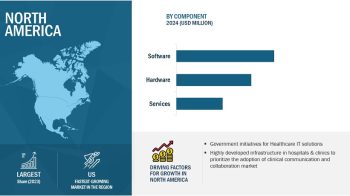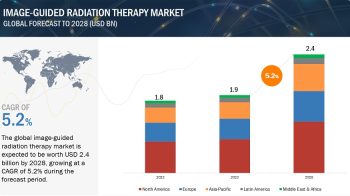Overview of Laboratory Informatics
Laboratory informatics is the use of information technology in the laboratory environment to manage and analyze scientific data and laboratory operations. This includes laboratory information management systems (LIMS) and laboratory information systems (LIS). It is used to track laboratory inventory, automate laboratory processes, and improve data integrity. Laboratory informatics systems are used in a wide range of scientific fields, including biochemistry, genetics, and pharmacology. They can be used to store and analyze data, monitor laboratory processes, and provide regulatory compliance. Laboratory informatics can also be used to manage the workflow of the laboratory, including scheduling and resource management.
Latest Trends in Laboratory Informatics
1. Artificial Intelligence (AI) and Machine Learning (ML): AI and ML are increasingly used in laboratory informatics to automate processes, detect abnormalities in data and samples, improve efficiency, and reduce costs.
2. Cloud Computing: Cloud computing is being used to store, access, and analyze data and samples in the laboratory. This allows laboratories to access data from any location and share it with collaborators.
3. Big Data: Big data techniques are being used to analyze and interpret large volumes of laboratory data. This allows laboratories to gain deeper insights from their data and make more informed decisions.
4. Data Visualization: Data visualization tools are being used to create interactive dashboards that allow laboratories to quickly understand and interact with their data.
5. Mobile Applications: Mobile applications are being used to facilitate the collection, storage, and sharing of laboratory data. This enables laboratory staff to work remotely and access data on the go.
6. Predictive Analytics: Predictive analytics are being used to anticipate and prevent problems before they occur. This helps laboratories to be more proactive in their approach to laboratory management.
Common Challenges Faced by Laboratory Informatics
1. Integration: One of the most common challenges faced by laboratory informatics is integrating systems within the laboratory. This includes integrating different types of instruments and software, as well as connecting with external systems such as laboratory information management systems (LIMS).
2. Data Management: Laboratories often collect large amounts of data, which can be complex and difficult to manage. Laboratory informatics systems need to have the ability to store, organize, and analyze data in order to make it useful for decision-making.
3. Security: Security is a key concern for laboratories, as they must protect sensitive information from unauthorized access. Laboratory informatics systems must be designed to ensure data is secure and only accessible by those who need it.
4. Compliance: Laboratories must ensure that their operations and data are in compliance with regulatory requirements. Laboratory informatics systems must be designed to ensure compliance with applicable regulations and standards.
5. Cost: Laboratory informatics systems can be expensive to implement and maintain. Laboratories must carefully assess the potential costs associated with implementing a laboratory informatics system in order to determine if it is worth the investment.
Advantages of Laboratory Informatics
1. Improved Efficiency: Laboratory informatics provides a single, unified platform for managing laboratory data, which helps streamline processes, improve laboratory efficiency, and reduce errors.
2. Improved Data Quality: Laboratory informatics helps ensure the accuracy and consistency of data by providing a central repository for data management.
3. Enhanced Data Security: Laboratory informatics provides a secure, centralized database for storing laboratory data, helping to ensure the safety and integrity of data.
4. Increased Collaboration: Laboratory informatics makes it easier to share and collaborate on data, helping to speed up research and development.
5. Improved Regulatory Compliance: Laboratory informatics helps ensure compliance with regulatory guidelines and standards by providing an audit trail of data.
Laboratory Informatics Industry Growth and Trends
The laboratory informatics industry is projected to continue growing over the next several years. According to research report the global laboratory informatics market in terms of revenue was estimated to be worth $3.4 billion in 2021 and is poised to reach $5.6 billion by 2026, growing at a CAGR of 10.8% from 2021 to 2026. This is attributed to the increasing demand for better data management and analysis capabilities, improved laboratory efficiency and the advancement of technologies such as artificial intelligence (AI) and the Internet of Things (IoT).
The market for laboratory informatics is expected to be driven by the growing demand for laboratory automation and integration of laboratory data. As laboratories become larger and more complex, companies are looking to integrate their systems and data for better management and improved operational efficiency. Additionally, the integration of AI and IoT into laboratory informatics systems is expected to further drive the market, as these technologies can provide improved data accuracy and analysis capabilities.
Other factors contributing to the growth of the laboratory informatics industry include the increasing availability of software-as-a-service (SaaS) solutions, the expansion of the laboratory informatics market into new areas (such as healthcare and food safety), and the increasing need for regulatory compliance.
Overall, the laboratory informatics industry is expected to grow significantly over the next few years, driven by the need for improved data management and analysis capabilities, automation, and integration of laboratory data. The integration of AI and IoT technologies into laboratory informatics systems
Related News:
https://www.prnewswire.co.uk/news-releases/laboratory-informatics-market-worth-5-6-billion-by-2026-exclusive-report-by-marketsandmarkets-tm–825284389.html


